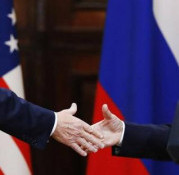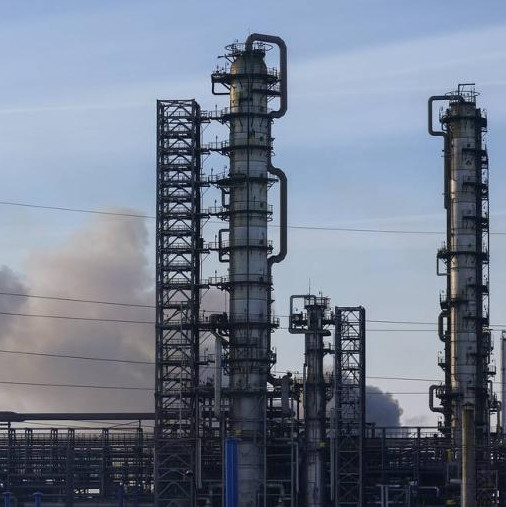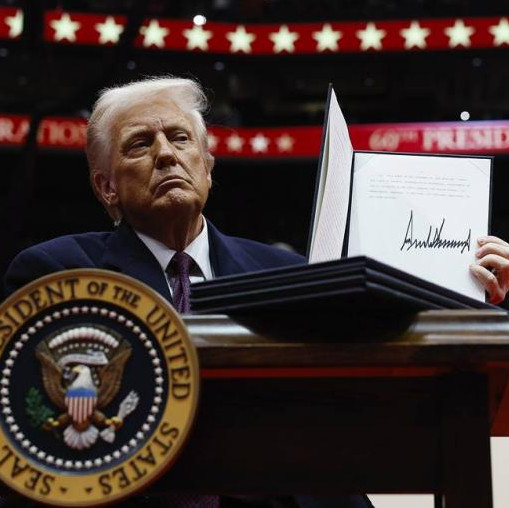
US President Donald Trump has declared April 5 Liberation Day and imposed "reciprocal" import tariffs on 180+ countries. Their size varies from 10 to 50 percent, and the date they are going to come into effect is April 9th. For each specific country, the tariff size was determined under a certain formula based on US trade deficit with it, and, as the US administration claims, they are about half the tariffs and non-tariff barriers set by each particular country for goods coming from the United States. As a result, a "mutual" 34-percent tariff was set for China (given the previously imposed one worth 20 to 54 percent), 20 percent for the EU, 46 percent for Vietnam, 24 percent for Japan, 26 percent for India, and 10 percent for the UK. Moreover, new tariffs have been added to the previously valid ones. The two largest exporters after China — Mexico and Canada — have been lucky so far, with only suffering 25-percent tariffs introduced earlier. "Reciprocal" ones will not be added to those already existing for steel and aluminum products, cars and spare parts, copper, pharmaceuticals, semiconductors, wood products, some essential minerals, energy and resources. Moreover, as Donald Trump stated, facing duties will be also imports from countries like the Hurd and McDonald archipelago (10 percent) and Norfolk with its population featuring slightly more than 2,000 (29 percent), in order to prevent their use as "laundries".
No "ally—neutral—enemy" differentiation has been used here. Thus, Hungary, Israel, and Italy got major duties despite their good relations with the United States. The tariffs are open-ended, and their final size will be a matter of negotiation between the United States and each particular country. Russia, Belarus, and North Korea have not been included in the list of countries targeted by "reciprocal" tariffs due to low trade volumes with them.
So far, only part of the states under new tariffs have come up with a response, and it varies a lot from case to case. So, none of the ASEAN states has announced retaliatory measures. Vietnam is the tariff wave’s main victim as shipments to the United States will now cost 90 percent for local products, with Hanoi having immediately called for negotiations. Earlier in March, the Vietnamese leadership announced readiness to reduce duties on American goods, including LNG and automobiles, as well as to expeditiously approve the use of Starlink communication systems, but it has not helped a lot. Thailand, Indonesia, and other countries in the region have responded in a similar way as they loathe opposing the United States and seek to prevent collapsed exports.
The United Kingdom, Australia, and New Zealand have also stayed amicable, announcing their intent to strike a trade deal with the United States.
The European Union has found itself in an utterly unpleasant situation, because it already faces recession due to rising energy prices because of the conflict with Russia, and tariffs could be a death sentence for its industry. So far, there has been no single response from the EU to America's moves. German Economy Minister Robert Habeck urged negotiations but allowed for a full-fledged response if they failed. French President Emmanuel Macron is a lot more belligerent, calling on French companies to suspend investment in the United States and threatening with duties on American digital services. Meanwhile, Italy and Hungary have been counting on their special relations with the United States. The European Commission intends to release a list of American goods for extra duties in the nearest future, but yet only in response to the previously imposed ones on EU’s steel and aluminum.
At the same time, China, Canada, and Mexico condemned Trump’s decision as the United States is their primary market. The Chinese leadership called the new US tariffs a "typical act of unilateral bullying" that "does not comply with international trade rules, seriously harms China’s legitimate rights and interests." For China, their level will reach 60 percent, making many products lose competitiveness in the American market. China was first one to announce extra 34-percent retaliatory duties on American imports and a ban on exports of seven types of rare earth metals, listing American technology companies among those whom all the transactions are prohibited with, including drone manufacturers Skydio and Brinc Drones. The measures announced will affect most of US’ remaining exports to China ($150bn). Earlier, tariffs were imposed on a number of particular goods such as agricultural supplies.
As for the global markets, their first reaction was totally negative. Thus, March 3 saw New York Stock Exchange value of shares fall by about $2.5 trillion after the tariffs were announced. And when China came up with additional retaliatory duties on Friday, futures on US stock indexes showed another, no less sharp surge.
As regards assessing the medium-term impact, the tariff wars have only just begun, with no complete picture of retaliation measures available so far. There will be numerous negotiations on mitigating mutual claims. Therefore, quantitative estimates are preliminary for the time being. Head of US economic research at the Fitch Ratings agency Olu Sonola noted that the effective US tariff rate on imports will now reach its highest level since 1910, amounting to 22 percent (by the end of 2024 it was 2.5 percent), which is going to be a game-changer for global economy, and many countries will find themselves in recession. JPMorgan bank experts agree with this, saying that global recession in the second half of 2025 is 60 percent feasible.
If agreements between key partners are not reached, a full-scale trade war with escalating retaliatory duties will inevitably disrupt supply chains, evocate a spike in inflation, worsen economic prospects for both the American and global economies, and contribute to its further fragmentation amid new interregional trade unions and US declining role in the global financial system and trade. So, American trade tariffs may well entail a step change in the global trade order.
The American economy would be seriously affected, too. Some estimates suggest that relevant damage could range from 0.2 to 1.3 percent of GDP, and additional inflation might reach 0.5-1 percent, with American household spending soaring by $1,000-$2,000 a year. The car industry would rank among the most affected sectors of American economy, given its highly integrated nature. American automakers had actively moved production facilities to Mexico and Canada, importing both finished cars and spare parts from there. According to S&P Global Mobility, about 45 percent of passenger cars sold in the United States in 2024 (3.6 million units) were imported from the mentioned countries, while another 3.7 million arrived from Japan, Korea, the EU, etc. — a total of $474bn.
New tariffs would halve exports from Europe to the United States and lead to a 1.1-percent decrease in EU’s GDP, the company's experts say. Asian economies are also going to sustain severe damage. This war is a no-win one.









